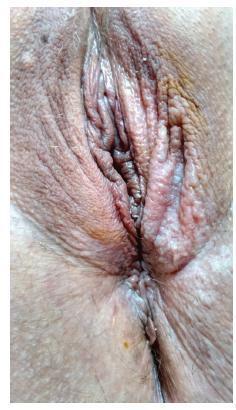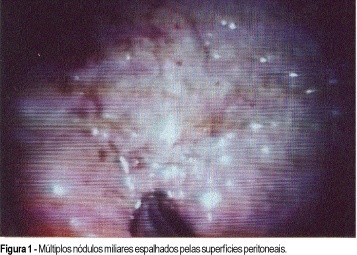Summary
Revista Brasileira de Ginecologia e Obstetrícia. 2005;27(9):524-528
DOI 10.1590/S0100-72032005000900004
PURPOSE: to evaluate the morphological changes in murine lacrimal glands by metoclopramide-induced hyperprolactinemia during the proestrus phase or pregnancy. METHODS: forty adult mice were divided into two groups: CTR1 (control) and MET1 (treated with metoclopramide). After fifty days, half of the mice were sacrificed. The remaining animals were mated, and then labeled as pregnant controls (CTR2). Part of these animals were treated with metoclopramide and constituted the metoclopramide-treated pregnant (MET2) group. The CTR2 and MET2 groups were sacrificed on the 6th day of pregnancy. The blood was collected for determination of the hormonal levels of estradiol and progesterone by a chemoluminescent method. The lacrimal glands were then removed, fixed in 10% formaldehyde and stained with HE. The morphometric analysis was performed using the Axion Vision program (Carl Zeiss) to measure acinar nuclear and cellular volumes. RESULTS: the nuclear and cellular volumes of the lacrimal glands in the MET1-(152.2±8.7; 6.3±1.6 µm³) and MET2-(278.3±7.9; 27.5±0.9 µm³) treated groups were lower than those in CTR1 (204.2±7.4; 21.9±1.3 µm³) and CTR2 (329.4±2.2; 35.5±2.0 µm³), respectively. There was a significant hormonal level reduction in the animals that received metoclopramide compared to controls (CTR1: estradiol = 156.6±42.2 pg/ml; progesterone = 39.4±5.1 ng/ml; MET1: estradiol = 108.0±33.1 pg/ml; progesterone = 28.0±6.4 ng/ml; CTR2: estradiol = 354.0±56.0 pg/ml; progesterone = 251.0±56.0 ng/ml; MET2: estradiol = 293.0±43.0 pg/ml, progesterone = 184.0±33.0 ng/ml). CONCLUSION: metoclopramide-induced hyperprolactinemia produced morphological signs of reduction of cellular activity in lacrimal glands during the proestrus phase and pregnancy. It is hypothesized that this effect might be related to the hyperprolactinemia-induced decrease in the hormonal production of estrogen and progesterone.

Summary
Revista Brasileira de Ginecologia e Obstetrícia. 2016;38(10):524-528
Extramammary Paget disease (EPD) is a rare malign neoplasm that may affect the vulva and has manifestations common to benign diseases such as itching, pain and eczema. This leads to delay in diagnosis and consequent worse prognosis. The definitive diagnosis is obtained by biopsy of the vulva, which shows Paget cells. The treatment of choice is wide excision with margins, which leads to sequelae, functional and aesthetic. Recurrence is common. This article reports the case of a 48-year-old female patient with history of vulvar itching for the past 2 years, who had been submitted to various treatments for benign pathologies. The patient was biopsied and was diagnosed with extensive EPD, being submitted to vulvectomy. This article aims to draw attention to the need for biopsy of pruritic vulvar lesions that do not respond to usual treatment.

Summary
Revista Brasileira de Ginecologia e Obstetrícia. 2007;29(10):525-531
DOI 10.1590/S0100-72032007001000006
PURPOSE: to evaluate changes in mammographic breast density in postmenopausal women using raloxifene. METHODS: in this clinical trial, 80 women (mean age=61.1 years) were studied prospectively. Forty patients received 60 mg/day raloxifene, and 40 women comprised the non-treated group (control), paired by age and time of menopause. The treated group was composed of patients with osteoporosis of the lumbar spine. Those with history of breast surgery and users of hormone therapy up to six months prior to the study were excluded. The breast density was assessed qualitatively (subjective) and quantitatively (objective) in two moments, initial and final, after a 6-month follow-up. The 320 mammograms (craniocaudal and oblique) were interpreted qualitatively by the Breast Imaging Reporting and Data System (BI-RADS) classification and quantitatively by digital scanning and computer-assisted segmentation. For statistical analysis t-test, Wilcoxon Mann-Whitney, Spearman correlation and the kappa index were used. RESULTS: on the initial statistical comparison, the groups were considered homogenous for the variables: analyzed age, time of menopause, parity, breast feeding, previous hormonal therapy and body mass index. Baseline breast density, by qualitative and quantitative methods, correlated negatively with the age in both groups (p<0.05). Concerning the other variables, there was no correlation. After six months, no alteration was observed in the mammographic breast density in 38 women of raloxifene group and 38 of the control group, by qualitative method. However, by quantitative method, no alteration was observed in 30 women of the raloxifene group and 27 controls (p>0.05). It was observed a weak agreement rate (kappa=0.25) between the BI-RADS classification and digital scanning/computer-assisted segmentation. CONCLUSIONS: in post-menopausal women with osteoporosis, submitted to raloxifene treatment for six months, no alterations were observed on the mammographic breast density.
Summary
Revista Brasileira de Ginecologia e Obstetrícia. 2003;25(7):525-528
DOI 10.1590/S0100-72032003000700010
PURPOSE: to evaluate the results of the use of bovine pericardium in the pubovaginal sling procedure for treatment of stress urinary incontinence. METHODS: a prospective analysis of five patients who underwent pubovaginal sling with the use of bovine pericardium strip for stress urinary incontinence in the "Hospital das Clínicas of UFMG" from October/2001 to December/2001. The mean age was 48.2±11.5 years (33 to 69 years). RESULTS: the mean surgical time was 45±35.3 min and the mean hospital stay was 36±12.4 h (24 to 48 h). Complications in the periperative or immediate postoperative period did not occur. All patients initially presented satisfactory results with normal voiding and without stress incontinence. Postoperative complications occurred in the 5 patients (100%), with dehiscence of the vaginal wound and total expulsion of the strip in 2 patients (40%) and partial expulsion in 3 patients (60%). All patients presented stress urinary incontinence and were submitted to a new sling procedure using the rectus fascia. The patients then progressed without complications and with improvement of urinary continence in 4 patients (80%). CONCLUSIONS: pubovaginal sling with the use of bovine pericardium was associated with high rates of complications. Therefore, its use is not recommended in the treatment of stress urinary incontinence.
Summary
Revista Brasileira de Ginecologia e Obstetrícia. 2000;22(8):525-528
DOI 10.1590/S0100-72032000000800009
Pelvic tuberculosis is an extrapulmonary form of tuberculosis with increasing incidence in the western world. Clinical and laboratory findings of this disease are often unspecific and mimic a variety of other disorders, including gynecologic malignant tumors. The authors report a case of a 53-year-old woman with pelvic tuberculosis and associated abdominal tuberculous peritonitis. Laboratory investigation included laparoscopy, CA-125 levels and tuberculin test, among others. Discussion on the clinicopathological aspects and diagnostic methods used to elucidate this case is presented.

Summary
Revista Brasileira de Ginecologia e Obstetrícia. 2010;32(11):525-529
DOI 10.1590/S0100-72032010001100002
PURPOSE: to evaluate the characteristics of the menstrual cycle and to identify the occurrence of ovulation in nulliparous young women with sickle cell anemia (SCA). METHODS: we conducted a case-control study including 26 nulliparous women of reproductive age, divided into two groups: "cases", consisting of 13 women with SCA, and "Control" Group, consisting of 13 healthy women with the same interval since menarche. The characteristics of the menstrual cycle were reported by the participants, who were also submitted to measurements of serum progesterone, basal body temperature curves and transabdominal ultrasound in three consecutive cycles (total: 78 cycles) in order to identify the occurrence of ovulation. The results were compared between groups using the nonparametric Mann-Whitney or Kruskal Wallis tests, and the differences were considered significant when p-value < 0.05. RESULTS: no significant difference was found in mean chronological age between the two groups (p = 0.2) in the pattern of the menstrual cycle when duration of flow (p = 0.4) and interval between cycles (p = 0.3) were compared. There was no difference between groups in age at menarche (p = 0.05). Mean hemoglobin value was 8.4 g/dL (± 0.9) in the group of women with SCA and 12.6 g/dL (± 0.8) in the control group (p < 0.01). The frequency of ovulatory cycles was similar for cases (76.9%) and controls (92.3%) (p = 0.5), with a predominance of individuals with three ovulatory cycles in the control group (84.6%) compared to 23.1% in the case group (p = 0.04). CONCLUSION: the findings justify the need for effective guidance for patients with SCA regarding sexual activity, the possibility of pregnancy and the alternatives for contraception.
Summary
Revista Brasileira de Ginecologia e Obstetrícia. 1998;20(9):525-531
DOI 10.1590/S0100-72031998000900006
Purpose: to calculate sensitivity, specificity and positive and negative predictive values for multiparameter ultrasound scores for Down's syndrome. Patients and Methods: sensitivity and specificity for Down syndrome were calculated for ultrasound scores in a prospective study of ultrasound signs from 16 to 24 weeks in a high-risk population who denied invasive procedures after genetic counselling. The signs and scores were: femur/foot length < 0,9 (1), nuchal fold > 5 mm (2), pyelocaliceal diameter > 5 mm (1), nasal bones < 6 mm (1), absent or hypoplastic fifth median phalanx (1) and major structural malformations (2). Complete follow-up was obtained in each case. Genetic amniocentesis was proposed in the case of score 2 or more. Results: a total of 963 patients were examined from October 93 to December 97 at a mean gestational age of 19.6 (range 16 -24) weeks. Women's age ranged from 35 to 47 years (mean 38.8) and 18 Down syndrome cases were observed (1.8%). Sensitivity was 94.5% (17/18) for score 1 and 73% (13/18) for score 2 (false positive rate of 9.8% for score 1 and 4.1% for score 2). Individual sign sensitivity and specificity were: femur/foot = 16.7% (3/18) and 96.8% (915/945); nasal bones = 22.2% (4/18) and 92.1% (870/945); nuchal fold = 44.4% (8/18) and 96.5% (912/945); pyelic diameter = 38.9% (7/18) and 94.3% (891/945); absent phalanx = 22.2% (4/18) and 98.5% (912/945); malformation = 22.2% (4/18) and 98.2% (928/945). Conclusions: the overall sensitivity for score 1 was high but false positive rates were also high. For score 2, sensibility was still good (73%) and false positive rate was acceptable (4.1%). Positive and negative predictive values can be calculated for each prevalence (women's age). More cases are needed to reach final conclusions about this screening method (specially in a low-risk population) although this system has been useful for high-risk patients who deny invasive procedures.
Summary
Revista Brasileira de Ginecologia e Obstetrícia. 2014;36(11):525-526
DOI 10.1590/SO100-720320140005133